第3章
Again, the boundaries by which living beings are naturally determined are six in number, superior and inferior, before and behind, right and left.Of these all living beings have a superior and an inferior part; for superior and inferior is in plants too, not only in animals.And this distinction is one of function, not merely of position relatively to our earth and the sky above our heads.The superior is that from which flows in each kind the distribution of nutriment and the process of growth; the inferior is that to which the process flows and in which it ends.One is a starting-point, the other an end, and the starting-point is the superior.And yet it might be thought that in the case of plants at least the inferior is rather the appropriate starting-point, for in them the superior and inferior are in position other than in animals.Still they are similarly situated from the point of view of function, though not in their position relatively to the universe.The roots are the superior part of a plant, for from them the nutriment is distributed to the growing members, and a plant takes it with its roots as an animal does with its mouth.
Things that are not only alive but are animals have both a front and a back, because they all have sense, and front and back are distinguished by reference to sense.The front is the part in which sense is innate, and whence each thing gets its sensations, the opposite parts are the back.
All animals which partake not only in sense, but are able of themselves to make a change of place, have a further distinction of left and right besides those already enumerated; like the former these are distinctions of function and not of position.The right is that from which change of position naturally begins, the opposite which naturally depends upon this is the left.
This distinction (of right and left) is more articulate and detailed in some than in others.For animals which make the aforesaid change (of place) by the help of organized parts (I mean feet for example, or wings or similar organs) have the left and right distinguished in greater detail, while those which are not differentiated into such parts, but make the differentiation in the body itself and so progress, like some footless animals (for example snakes and caterpillars after their kind, and besides what men call earth-worms), all these have the distinction spoken of, although it is not made so manifest to us.That the beginning of movement is on the right is indicated by the fact that all men carry burdens on the left shoulder;in this way they set free the side which initiates movement and enable the side which bears the weight to be moved.And so men hop easier on the left leg; for the nature of the right is to initiate movement, that of the left to be moved.The burden then must rest on the side which is to be moved, not on that which is going to cause movement, and if it be set on the moving side, which is the original of movement, it will either not be moved at all or with more labour.
Another indication that the right is the source of movement is the way we put our feet forward; all men lead off with the left, and after standing still prefer to put the left foot forward, unless something happens to prevent it.The reason is that their movement comes from the leg they step off, not from the one put forward.Again, men guard themselves with their right.And this is the reason why the right is the same in all, for that from which motion begins is the same for all, and has its natural position in the same place, and for this reason the spiral-shaped Testaceans have their shells on the right, for they do not move in the direction of the spire, but all go forward in the direction opposite to the spire.Examples are the murex and the ceryx.As all animals then start movement from the right, and the right moves in the same direction as the whole, it is necessary for all to be alike right-handed.And man has the left limbs detached more than any other animal because he is natural in a higher degree than the other animals; now the right is naturally both better than the left and separate from it, and so in man the right is more especially the right, more dextrous that is, than in other animals.The right then being differentiated it is only reasonable that in man the left should be most movable, and most detached.In man, too, the other starting-points are found most naturally and clearly distinct, the superior part that is and the front.